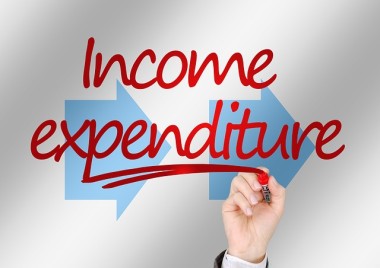Search engine marketing, much like love, is a battlefield. You must have a plan in place before you begin, or success won’t even be an option.
People are often overwhelmed with the bidding strategies provided by their PPC platforms. The options can seem endless. There are cost-per-acquisition strategies, cost-per-click strategies, bidding position strategies, and more. How are you supposed to choose the overarching strategy that is right for your campaigns?
Well, that depends on your goals.
This article is a guide to help you improve the performance of your SEM accounts. The ideas within it can be applied to Bing Ads or similar PPC platforms, but Google’s options are more robust, so it will be my focus. My goal is to lay out the benefits of the most popular PPC bidding strategies, and who should employ them.
Conversion Strategies
 How much is one conversion worth to you?
How much is one conversion worth to you?These strategies get down to brass tacks. Every change in your account centers on driving conversions within specific limits. The idea is to flexibly automate the exact bids that your campaigns place in the auctions, based on how likely a keyword is to lead to a conversion.
There are two basic conversion strategies: CPA targeting and enhanced cost-per-click targeting. Your goals should determine which one you use.
Cost-Per-Acquisition Strategy
A cost-per-acquisition (CPA) strategy allows you to maximize the conversions that you receive for a specific price. Setting a $10.00 CPA will tell your PPC platform to reduce your bids once it reaches the cost ceiling. The end goal is to drive conversions at or beneath the set price. You will find conversion optimization options in most bidding optimization tools like Marin or Kenshoo.
When to Use It:
Use a CPA strategy when you have specific goals that you want your website visitors to achieve. Setting up conversion points in your website is straightforward, but doing so can take time and a lot of research. You want your conversions to be as direct and easy to achieve as possible. Adding items to shopping carts or newsletter form submissions are good candidates for a CPA optimization strategy. The best ones are always yes or no binary actions – the visitor hit the button, or they did not.
Enhanced Cost-Per-Click Strategy
Enhanced cost-per-click (eCPC) strategies are useful if you want to optimize your clicks while retaining a bit more control over your bids. This type of strategy lets you modify your bids only on queries that are most likely to lead to conversions. First, your PPC platform analyzes the thousands of ad auctions it participates in normally. Then, it raises your max CPC threshold to capture clicks that the data shows to be more valuable.
How do PPC platforms know where to raise bids? They analyze the behavior of visitors you have received previously from ad auctions and calculate the probability of a conversion occurring. The decision is made after incorporating as much data as possible, which can include device type, time of day, location, and more.
When to Use It:
You should implement an eCPC strategy when you aren’t comfortable surrendering all of your control to a PPC tool. This approach is much less hands-off than the CPA-style bidding strategy, but it still offers a lot of automation. Your campaign will do everything it can to increase conversions, but it will take other restrictions like max bids when doing so.
Like in a CPA strategy, you should consider implementing an eCPC strategy when you have clear conversion events. This style performs better when your campaign is nuanced. Maybe your pricing varies significantly in a different location, or perhaps mobile phone users don’t convert as well. ECPC bidding is very open-ended, so it is easily applied to many situations.
Revenue/Conversion Strategies
PPC bidding strategies often drive bottom line revenue. Luckily, modern platforms have become precise enough to measure and predict the revenue and profit your campaigns are driving.
ROAS Strategy
 ROAS helps you measure the effectiveness of your ad spend
ROAS helps you measure the effectiveness of your ad spendReturn on ad spend (ROAS) bidding strategies are designed to deliver a specific amount of revenue over your advertising costs. You set a multiple of your costs that you would like to see returned to you in revenue. PPC bidding platforms follow the traditional ROAS formula:
ROAS = (Revenue)/(Cost)
Most PPC management platforms will work to return a set ROAS for the amount spent on your campaigns. Individual conversion values can vary, but your tool will average out the costs to meet the ROAS you set. It is important to monitor your campaigns using ROAS strategies to make sure you aren’t stifling areas where you can afford to spend more. Marketers often discover that conversions with low ROAS dragging down conversions with high ROAS when they are bundled in the same campaign. It’s a good idea to group together campaigns or ad groups with similar ROAS goals.
When to Use It:
Imagine that you want to spend five dollars for every conversion generated by your website. You calculate that you can expect to receive twenty-five dollars for every completed conversion. If you generate five sales, then your ROAS formula will look like:
($125)/(25) = 500% ROAS
This type of bidding strategy is great for businesses with products or services that are worth varying amounts. If you sell car parts, for example, implementing an ROAS strategy will average the revenue you generate across all of your products. Group together products that should generate similar amounts of ROAS and let your PPC tool do the work.
Visibility Strategies
Search engine advertising can be adapted to nearly any overarching strategy. It’s not always about conversion goals. Sometimes increasing visibility in strategic areas is more important.
Search Page Location Strategy
 Occasionally, good advertising is all about location, location, location.
Occasionally, good advertising is all about location, location, location.Sometimes you don’t need to be delicate with the amount you spend per conversion. Strategies that target locations in the search results will spend whatever it takes to maintain a position in the search auction.
This type of strategy allows you to set and forget your search bids. Your management platform will change bids throughout the day until your budget limit is reached. While this strategy can be very convenient, it can easily drive up your costs while gutting the profitability of your campaigns. Search auctions are always in flux; the costs-per-click change dramatically based things like device, time of day, and auction participants.
You should implement a target search page location strategy when you are comfortable spending money that might not return direct revenue. Otherwise, you will have to keep a very close eye on your campaigns, and may as well change your strategy to something less stressful.
When to Use It:
Search page location strategies are great when you have money to spend. The problem is the shrinking or sometimes non-existent profitability that you might see. That is why this strategy is useful when your primary goal is visibility and recognition. You will save yourself a headache by holding these types of campaigns to a different standard than the rest of your account.
Focus on metrics like impression share and assisted conversions instead of direct conversions and ROI. The goal is to get your name out there and influence conversions down the road, so take a step back and think longer term.
Outranking Share Strategies
 Outranking share strategies keeps you in the race, where your ad copy can shine.
Outranking share strategies keeps you in the race, where your ad copy can shine.Sometimes the goal is to outperform an opponent. An outranking share strategy is used when you want to outrank a competitor and capture more clicks on average. Implement it to make sure that your ads show more frequently than those of a competitor in search results.
Outranking share strategies generally involve three components:
- The competitor’s domain: It is important to remember that this strategy focuses on outperforming a single, specific competitor. Most PPC platforms will not let you enter a batch of domains you want to beat in the auctions. Position yourself against the domain that makes the most sense financially and from a branding standpoint.
- Target outranking share: The percentage of auctions that you aim to dominate. Mastering this part requires you to take a hard look at why you are pursuing this strategy and the target domain. Can you afford to outrank them in the vast majority of auctions? If you can afford to, should you? Run your numbers to see what share of auctions you are comfortable pursuing.
- Max bid limits: Much like the position bidding strategies, outranking a specific domain can become incredibly expensive quickly. Many advertisers make the mistake of underestimating a competitor’s advertising budget and reach, and wind up biting off more than they can chew. Platforms like AdWords will set your max bid limits for you if you would rather not work through the math, but be sure to keep an eye on your costs over time.
When to Use It:
Outranking share strategies can be incredibly effective when rolled into a larger competitor strategy. Positioning is the name of the game here. Aside from the advantage of a higher position in the ad auction, the huge value in this strategy is the ability to associate your brand with that of your competitors. Your potential visitors see your ad above your competitors (which increases trust) whenever a search is made. This is an opportunity to strategically advertise the differences between your brands. Many small brands competing with big players use this strategy with great results.
How can you convince a searcher that what you offer is a better choice than what your competitor offers? The key is to write stellar ad copy. Outranking an opponent isn’t worth a lot if their ads are better than yours. Remember, though, that conversions aren’t the only metric to use when measuring the success of this strategy. Branding plays are nebulous by nature, so it can be difficult when measuring your success.
Click-Based Strategies
Maximize Clicks Strategy
Perhaps the most direct of them all, this strategy will maximize the volume of clicks available for your budget. You won’t be able to set any CPA or ROAS targets, though. You will have to keep an eye on your campaigns to make sure they are profitable. While maximizing clicks is less sophisticated than the other strategies discussed above, there is still potential for a marketer who has deep knowledge of their account.
Most PPC platforms will require two pieces of information from you:
- Budget: How much are you willing to spend on the campaign? Remember that you pay for every ad click, so you are essentially telling your tool to charge you are much as possible.
- Max CPC: How much are you willing to pay-per-click? Your max CPC will determine the amount of clicks that you will receive.
When to Use It
A click strategy is simple to execute, which makes it extremely versatile. It would be easier to write about situations when it would not work for you. For example, accounts with thin margins would not be good candidates. You risk quickly overspending in areas where you are not profitable, especially if you are bidding on head terms or other expensive keywords. Make sure you keep your CPCs in check. Volume is the name of the game, so marketers pushing eyeballs to websites who make money on ad impressions have used this strategy with success.
Question: Which bidding strategy do you use most often? Did I miss one?
Image Credits
Featured Image: PDPics/Pixabay.com
In-post Photo #1: StockSnap/Pixabay.com
In-post Photo #2: geralt/Pixabay.com
In-post Photo #3: StockSnap/Pixabay.com
In-post Photo #4: Barni1/Pixabay.com





